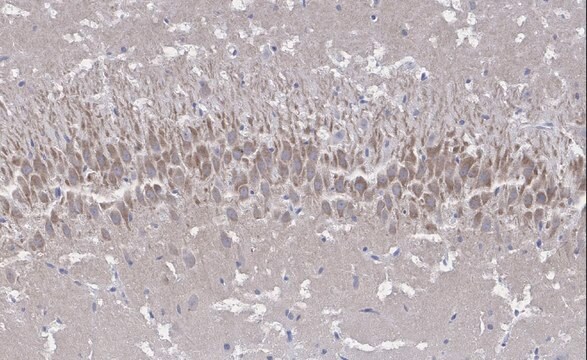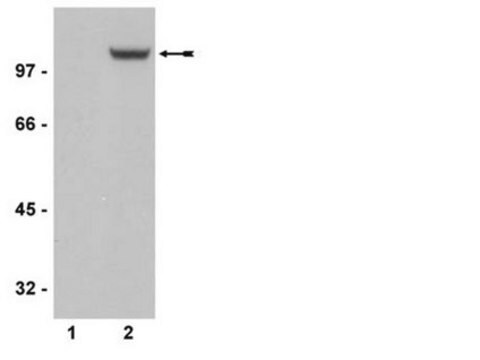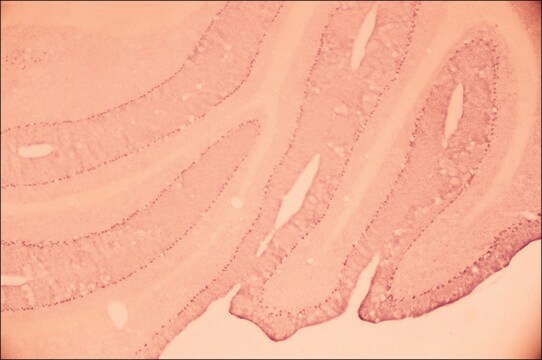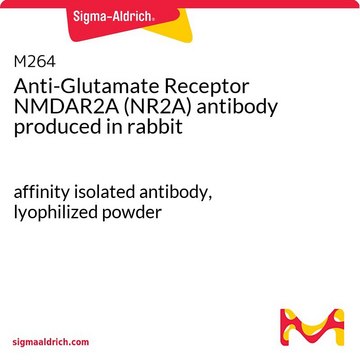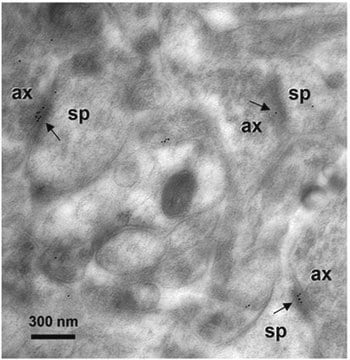A4352
Anti-phospho-AMPA Receptor, GluR1 Subunit (pSer831) antibody produced in rabbit
~1 mg/mL, affinity isolated antibody, buffered aqueous solution
Synonym(s):
Anti-phospho-AMPA Glutamate Receptor 1 (pSer831)
About This Item
IHC
IP
WB
immunohistochemistry: suitable
immunoprecipitation (IP): suitable
western blot: 1:1,000 using rat brain (hippocampal) homogenate
Recommended Products
biological source
rabbit
Quality Level
conjugate
unconjugated
antibody form
affinity isolated antibody
antibody product type
primary antibodies
clone
polyclonal
form
buffered aqueous solution
mol wt
antigen 100 kDa
species reactivity
rat, human
concentration
~1 mg/mL
technique(s)
direct ELISA: suitable
immunohistochemistry: suitable
immunoprecipitation (IP): suitable
western blot: 1:1,000 using rat brain (hippocampal) homogenate
UniProt accession no.
shipped in
dry ice
storage temp.
−20°C
target post-translational modification
phosphorylation (pSer831)
Gene Information
human ... GRIA1(2890)
rat ... Gria1(50592)
General description
Immunogen
Application
Physical form
Disclaimer
Not finding the right product?
Try our Product Selector Tool.
recommended
Storage Class Code
10 - Combustible liquids
WGK
WGK 1
Flash Point(F)
Not applicable
Flash Point(C)
Not applicable
Regulatory Listings
Regulatory Listings are mainly provided for chemical products. Only limited information can be provided here for non-chemical products. No entry means none of the components are listed. It is the user’s obligation to ensure the safe and legal use of the product.
JAN Code
A4352-150UL:
A4352-BULK:
A4352-150UL-PW:
A4352-VAR:
A4352-100UL:
Choose from one of the most recent versions:
Already Own This Product?
Find documentation for the products that you have recently purchased in the Document Library.
Our team of scientists has experience in all areas of research including Life Science, Material Science, Chemical Synthesis, Chromatography, Analytical and many others.
Contact Technical Service
